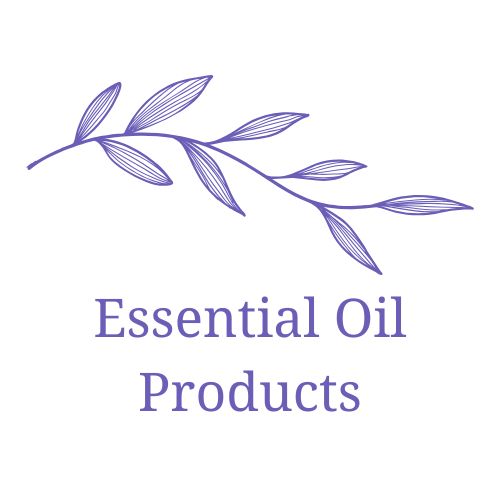Your cart is currently empty!
The Ultimate Guide to Essential Oils: Uses, Benefits, and Safety
The Ultimate Guide to Essential Oils: Uses, Benefits, and Safety
Essential oils have captivated the human experience for centuries, serving as sources of natural healing, fragrance, and potent therapeutic benefits. But what are essential oils? In essence, they are concentrated plant extracts that maintain the natural aroma and beneficial properties of their source vegetation. They are revered not just for their lovely scents but also for their diverse applications in various areas of health and wellness.
History of Essential Oils
The history of essential oils can be traced back thousands of years to ancient civilizations. The Egyptians were known to use them in their embalming processes and rituals, while the Chinese and Indians incorporated essential oils into their traditional medicines. Historical texts indicate the widespread use of these oils in ancient Greece, Rome, and India, highlighting their importance in early medicine and spirituality.
Throughout history, cultures around the globe have embraced the healing powers of plants. The trade routes during the medieval period further spread the awareness and usage of essential oils, leading to innovations in extraction techniques and the broader acceptance of aromatherapy.
Methods of Extraction
To truly understand essential oils, one must explore the methods used to extract these potent substances. The most common methods include steam distillation, cold pressing, and solvent extraction.
- Steam Distillation: This is the most widely used method for extracting essential oils. In this process, steam is passed through plant material, causing the essential oil to evaporate. The vapor is then cooled and condensed back into liquid form.
- Cold Pressing: Commonly used for citrus oils, this method involves mechanically pressing the rind of the fruit to release the essential oil without applying heat.
- Solvent Extraction: In this method, solvents are used to dissolve the essential oils from the plant material. The solvent is then evaporated, leaving behind the oil. This method is often used for flowers that are delicate and cannot withstand heat.
Aromatherapy Basics
Aromatherapy, a key aspect of using essential oils, involves inhaling or applying these oils for therapeutic effect. The practice is based on the premise that scents can affect the mind and body positively. Some popular essential oils in aromatherapy include lavender for relaxation, peppermint for energy, and eucalyptus for respiratory support.
To get started with aromatherapy, consider these simple methods:
- Diffusers: Diffusing essential oils in your home or workspace can create an uplifting environment.
- Inhalation: Inhale oils directly from the bottle or add a few drops to a tissue and breathe in the aroma.
- Baths: Add a few drops of essential oil to warm bath water, ideally combined with a carrier oil to enhance absorption.
Essential Oil Uses and Benefits
The versatility of essential oils is one of their most appealing features. Users often seek these oils for a variety of reasons, including:
- Stress Relief: Oils like chamomile and lavender are renowned for their calming capabilities and can help alleviate anxiety.
- Pain Management: Oils such as eucalyptus and ginger have been found beneficial for relieving muscular and joint pain when used topically.
- Improved Sleep: Essential oils like cedarwood and bergamot are often used to promote better sleep quality.
- Skin Care: Many essential oils, including tea tree and frankincense, have antiseptic and anti-inflammatory properties, making them useful for skin conditions.
Using Essential Oils Safely
Safety is paramount when using essential oils, particularly for beginners. Here are crucial safety tips:
- Dilution: Always dilute essential oils with a carrier oil (like coconut, jojoba, or almond oil) before applying them to the skin to prevent irritation.
- Patch Testing: Conduct a patch test on a small area of skin to ensure that there is no adverse reaction before using the oils widely.
- Avoid Sensitive Areas: Avoid applying essential oils to areas around the eyes, mucous membranes, or broken skin.
- Allergies and Contraindications: Be aware of any personal allergies and consult with a healthcare provider if using oils while pregnant, nursing, or on medication.
Scientific Research on Efficacy
The efficacy of essential oils has gained significant attention in scientific research. Numerous studies have explored their benefits, resulting in a growing body of evidence supporting various applications in health and wellness.
For example, research has shown that certain essential oils can reduce anxiety and improve mood, while others have demonstrated antimicrobial properties that can help combat infection. It’s essential to evaluate the quality of studies and consult healthcare professionals when considering essential oils for therapeutic use.
Carrier Oils: The Unsung Heroes
Carrier oils play a crucial role in the safe use of essential oils. These oils, derived from nuts, seeds, and other plant sources, dilute essential oils and aid their absorption into the skin.
Popular carrier oils include:
- Coconut Oil: Known for its moisturizing properties, it’s a perfect base for skin applications.
- Jojoba Oil: Closely resembles human sebum, making it a fantastic choice for various skin types.
- Sweet Almond Oil: Rich in vitamins A and E, it’s great for sensitive skin.
Choosing the right carrier oil can enhance the benefits of the essential oils you use and ensure your application is safe and effective.
As the world continues to embrace the natural remedies offered by essential oils, understanding their history, extraction methods, benefits, and safety considerations is essential for anyone—be it a novice seeking relaxation or a practitioner looking to enhance treatment approaches. With this knowledge, users can confidently explore the vast offerings of essential oils and their potential to enrich mind and body.

Leave a Reply